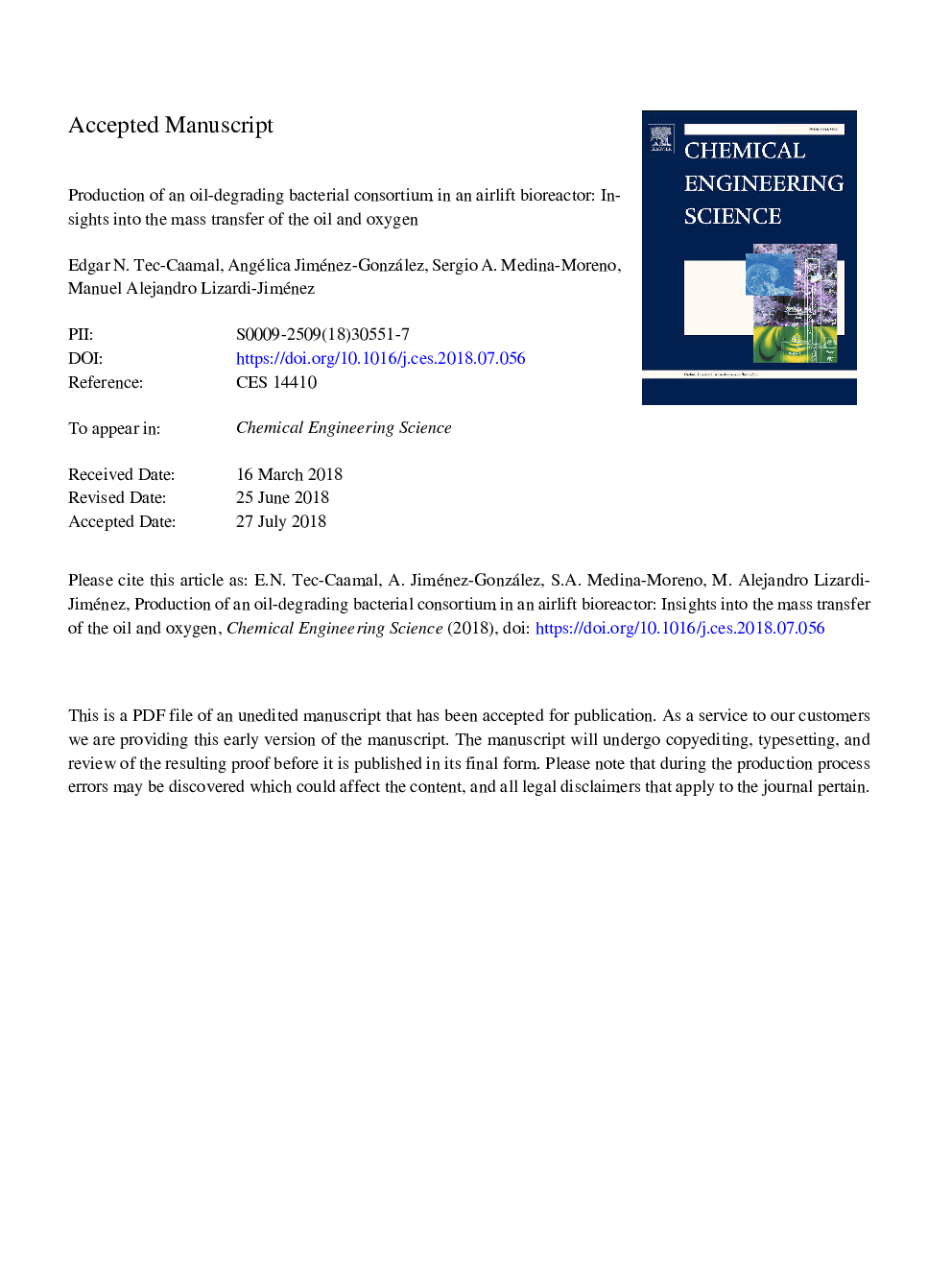| Article ID | Journal | Published Year | Pages | File Type |
|---|---|---|---|---|
| 6588187 | Chemical Engineering Science | 2018 | 35 Pages |
Abstract
The production of oil-degrading bacteria in multiphase airlift reactors (ALBs) could be limited by the mass transport of both the gaseous and oil phases. In our study, the mass transfer rates of hexadecane and oxygen (HTR/OTR) were evaluated during the production of oil-degrading bacteria in a 3-L airlift reactor. To improve the HTR/OTR ratios during kinetics, a high initial concentration of hexadecane (77â¯gâ¯Lâ1) and constant superficial gas velocity (UG) in the range of 1.5-3.5â¯cmâ¯sâ1 were used. Under these conditions, all initial HTR/OTR were close to the stoichiometric consumption ratio (SCR, â¼0.28), which in turn decreased at the end of the culture until 0.173â¯Â±â¯0.013, 0.108â¯Â±â¯0.006 and 0.123â¯Â±â¯0.006 (g HXD) (g O2)â1 for UG of 1.5, 2.5, 3.5â¯cmâ¯sâ1, respectively. The evaluation of the Damköhler numbers suggested an enhancement of HXD mass transport that allowed for obtaining a maximum suspended solids (SS) production of 4.9-6.0â¯g SS (L h)â1. Since the operation of the ALB at high superficial gas velocities may lead to high power inputs, the variable UG technique was used for energy saving, finding similar maximum SS production (6.09â¯g SS (L h)â1) to that obtained at a constant UG of 2.5â¯cmâ¯sâ1 and an energy saving of 33.4%. The improvement in the HTR/OTR ratio during ALB performance allowed us to enhance the production of an oil-degrading microbial consortium.
Related Topics
Physical Sciences and Engineering
Chemical Engineering
Chemical Engineering (General)
Authors
Edgar N. Tec-Caamal, Angélica Jiménez-González, Sergio A. Medina-Moreno, Manuel Alejandro Lizardi-Jiménez,
